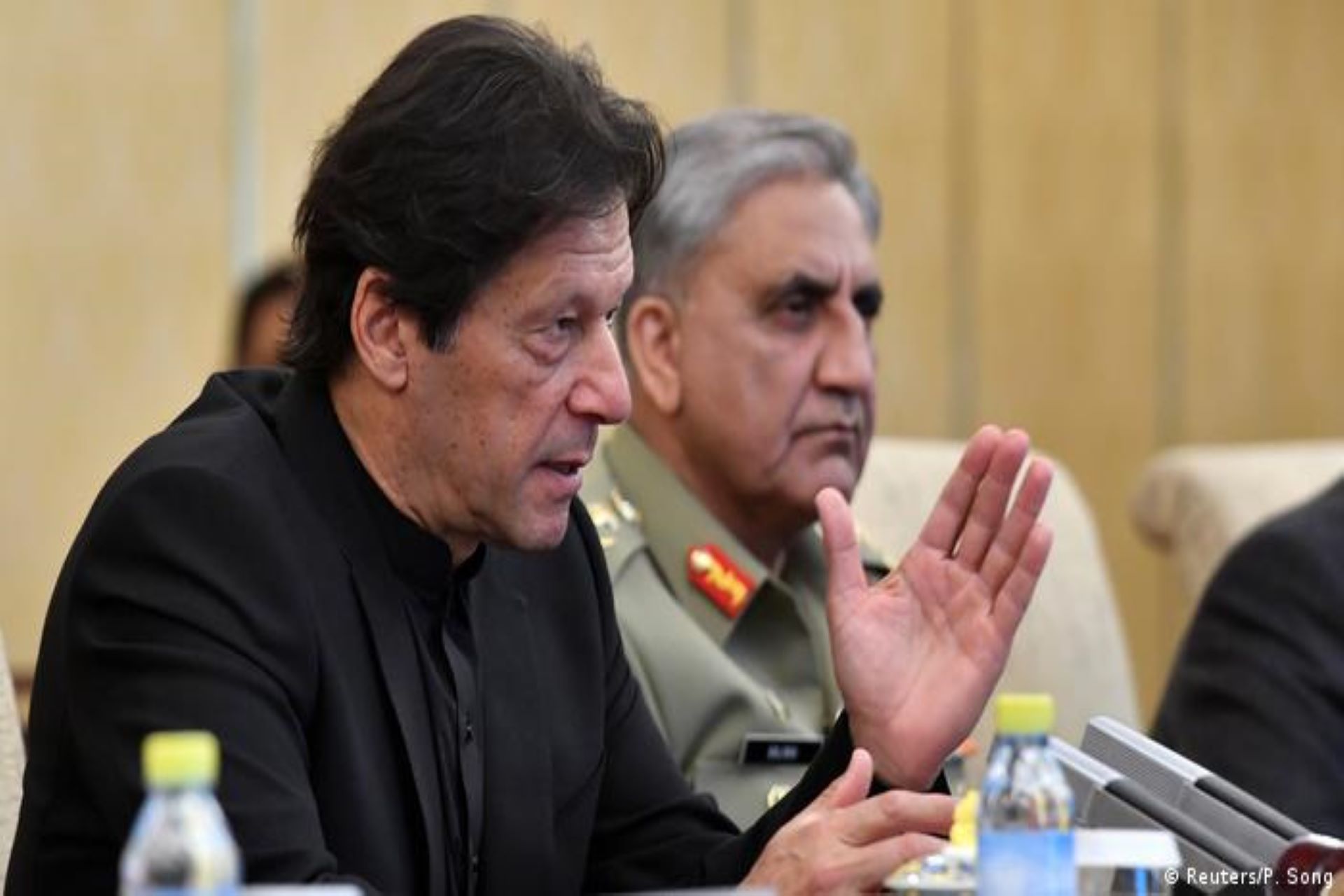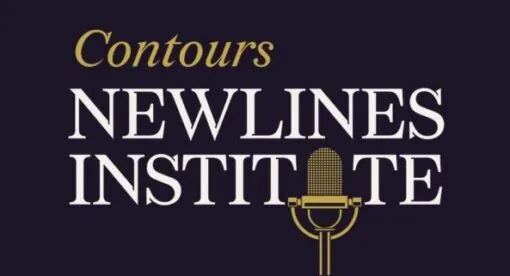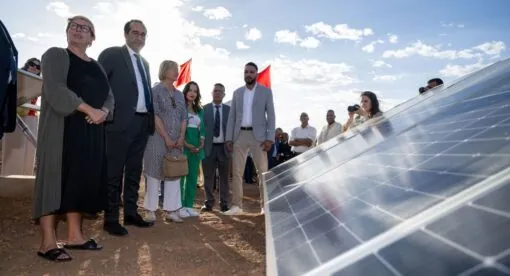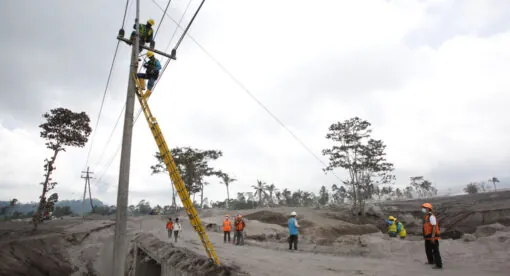Pakistan, which turns 75 in August, is yet again in the throes of internal regime change. The South Asian nation is approaching the end of its military’s fifth attempt to shape the country’s political system. The failure of the “hybrid regime” led by Prime Minister Imran Khan comes amid a deteriorating economic situation and strained relations with the United States. That said, as chaotic as the current crisis is, it is still a moment of opportunity for the country’s military and civilian stakeholders to break free of the causality loop that has the country oscillating between weak civilian governments and direct military rule.
Pakistan was plunged into a major political crisis April 3, when the deputy speaker of the parliament, in a violation of the constitution, refused to hold a vote of no confidence that would have led to Khan’s ouster, arguing that the opposition’s move to unseat him was part of a U.S. effort at regime change. Minutes later, Khan went on television to announce that he had asked the president to dissolve parliament and call for fresh elections, which was another violation of constitutional rules. The Supreme Court took suo motu notice of the crisis, and a five-member bench is expected to rule on the legality of these developments. Khan’s loss of parliamentary standing is primarily because he lost the support of the military that helped him come to power in 2018 and supported him until late last year. His administration’s poor governance and economic management is a key reason for the military withdrawing its backing.
Realizing that his political survival was unlikely, Khan on March 27 claimed that he had documentary evidence that the United States was behind the opposition’s efforts to oust him. His statement has been highly criticized in the Pakistani media as an attempt to salvage his position at the expense of the country’s most critical foreign relationship. Regardless of Khan’s fate, anti-Americanism will likely grow, especially among the significant cross-section of Pakistanis who support Khan, which will complicate efforts by Islamabad to improve relations with Washington.
Khan became prime minister as a result of the highly controversial 2018 elections, which were marred by electoral engineering by the army-led establishment. In a free and fair election, it would not have been possible for his party to jump from 35 to 149 seats, especially when the then-ruling Pakistan Muslim League (PML-N) of former three-time prime minister Nawaz Sharif retained much of its popularity. In addition, the dismal and controversial performance of Khan’s administration in the last three and half years have further rendered his party unpopular – though his base continues to support him.
Five Cycles
The current political crisis represents the tumultuous endgame of the fifth attempt since the late 1950s by the country’s powerful army to dominate the political system. The first four involved military regimes led by Field Marshal Ayub Khan (1958-69), Gen. Yahya Khan (1969-71), Gen. Muhammad Zia-ul-Haq (1977-88), and Gen. Pervez Musharraf (1999-2008). During each of these eras, the military leadership engaged in a subversion of the constitutional process – seeking to create a system that subordinated the legislature under a powerful presidency led by the top general. Despite the elaborate constitutional engineering, each of these attempts failed when the military could no longer sustain the political setup. After the failure of each of these experiments, the military was forced to retreat into the background and allow for a brief return to democratic politics. The duration of these periods of constitutional politics has varied, but the common denominator is that the military has tried to contain the process of civilianization via behind-the-scenes maneuverings.
The first attempt to create a military-dominated political dispensation ended with Ayub Khan’s ouster from power. His successor, Yahya Khan, imposed martial law but also organized the country’s first-ever free and fair elections in 1970, which was part of the second round of the military’s political experimentation.
The results of that election cut short both the second period of military rule and the army’s second attempt at political engineering. The Bengali ethno-nationalist Awami League won 160 seats from East Pakistan (present-day Bangladesh) followed by Pakistan People’s Party (PPP) in a distant second place with 81 seats – all in constituencies based in the western wing of the country (present-day Pakistan). A refusal to hand over power to the Awami League triggered a civil insurrection in the country’s eastern wing. The Yahya Khan government’s attempt to quell the uprising through a military operation paved the way for a civil war that ended in December 1971 with the secession of the eastern wing of the country, after nearly 100,000 Pakistani troops surrendered to Indian forces who were supporting the rebels.
The defeat, accompanied with loss of more than half the country’s population, was a massive shock that led to widespread protests forcing Yahya Khan to step down and hand over power to PPP leader Zulfikar Ali Bhutto, which marked the end of the second military intervention and kicked off the most significant period of civilian rule in the history of the country. By the summer of 1973, Bhutto’s government had crafted a constitution, which was signed off by all political forces and ratified by parliament. However, when elections were held in 1977 and Bhutto’s ruling PPP claimed a massive victory, opposition parties’ allegations of widespread rigging plunged the country into turmoil – an opportunity seized by Zia-ul-Haq to mount another coup and impose martial law for eight years, which represented the third and most consequential attempt by the army to dominate politics.
The nature of martial law is as such that it cannot endure indefinitely and has to be diluted because of the military ruler’s constant need for legitimacy. In the early 1960s, Ayub Khan formally retired from the military to lead a new presidential system that his junta had created from scratch. In sharp contrast, Zia held on to the post of army chief and effected changes to the 1973 constitution that allowed him to hold the office of president with the power to dismiss the prime minister and parliament, which he exercised in May 1988. His death along with several members of the military’s top brass in a mysterious plane crash three months later brought about the end of the third cycle and paved the way for the return of civilian governance.
Over the course of the next 11 years, the country went through four short-lived elected governments – alternatively led by prime ministers Benazir Bhutto (1988-90 and 1993-96) and Nawaz Sharif (1990-93 and 1997-99). Both Bhutto governments and the first Sharif administration were dismissed by presidents who were proxies of the military establishment and wielded the power to dismiss the legislature as per a clause inserted into the constitution by the Zia regime in 1985. This clause was a useful device to get rid of a civilian government that was trying to assert itself and resisting the military’s day-to-day efforts to curb its authority. The fact that the two rival parties aligned with the establishment against each other helped the military’s efforts. During his second term, Sharif, with a two-thirds majority in the legislature, enacted the 13th amendment, which took away the president’s powers to dismiss the government and dissolve parliament.
The move, however, did not secure civilian governments from arbitrary dismissals, as was evident when the army resorted to yet another coup led by Musharraf, which ushered in a fourth military regime. Cognizant of the fate of the putschists of the past, Musharraf embarked upon a unique formula to establish a new order that would formally be civilian as far as governance was concerned but with himself – a serving general – sitting atop the edifice in the role of president with sweeping powers that he decreed in 2002 as changes to the constitution. Musharraf was popular, so his system worked for a while – until it didn’t. A series of moves he made in 2007 – sacking the supreme court’s chief justice, an army operation against Islamist militants that had laid siege to a major mosque in the capital, contesting presidential elections while still holding the post of army chief, imposition of a state of emergency – proved to be his undoing.
In November 2007, he was forced to step down as military chief, after which he effectively lost power (though he served as a lame duck president until August 2008). The new army chief decided to pull the armed forces out of politics, which effectively brought an end to the fourth attempt by the military to subordinate the country’s political economy. Elections earlier that year, which the PPP won (weeks after its leader, Benazir Bhutto, was assassinated by Islamist militants) restored the democratic process. While the military went back to indirectly shaping the behavior of the civilian government and limiting its authority, the PPP remained in power for a full five years, and in the aftermath of the 2013 elections won by Sharif’s PML-N, Pakistan experienced its first-ever transfer of power from one duly elected democratic government to another – in no small part made possible by the two mainstream parties agreeing to not subvert each other in the 2006 Charter of Democracy.
Rise and Fall of the Hybrid Regime
The fall of the Musharraf regime had given a boost to civilian governance, especially with the 2009 passage of the 18th amendment, which restored the parliament’s supremacy and devolved several powers to the provinces. It was a watershed development and a major step toward the consolidation of civilian rule. This was a cause of major concern for the military, which wasn’t prepared to allow any substantive moves toward civilian supremacy over it. By the time the third Sharif government took office, it had been a few years since the military had been quietly developing a third option to the PPP/PML-N duopoly: Khan’s PTI.
The PTI was a small party launched in 1996 by the popular former cricket star-turned-philanthropist. While a national hero – given his career as a sportsman and the founding of a major cancer hospital – Khan was only able to secure a single seat in 2002 election. It was not until 2011 that he organized his first major rally in the country, which drew an unprecedentedly large crowd energized by his anti-corruption agenda. This show of strength was made possible with help from the military, especially its Inter-Services Intelligence directorate.
The help from the military aside, Khan had built a political base for himself, which would help him win 36 seats in the 2013 polls. Initially, Khan claimed foul play, alleging that electoral fraud deprived his party of a much larger share of the parliamentary pie. When an official investigation found no evidence to substantiate his claims, his party, backed by the military, took to the streets and staged a months-long sit-in demanding Sharif resign from the premiership. The PTI continued to increase pressure on the Sharif government over the next four years, and in 2017 – in the wake of the Panama Papers scandal – Sharif was ousted from power and disqualified for life from holding public office in a Supreme Court verdict enabled by the military establishment.
Meanwhile, the military had begun to prepare for 2018 polls and once again engaged in electoral engineering that allowed Khan’s PTI to more than quadruple its seats to form a government in what was widely seen as a highly controversial outcome by the opposition and most independent observers. The military had succeeded in creating a viable third political force, identified by pro-military commentators as the “hybrid regime.” This new political order revolved around a populist party – catapulted into power via elections marred by massive irregularities – that was said to be on the “same page” as the military establishment.
Khan, however, was not ready for governance given his own lack of experience and skillset and that of his associates, whom he appointed to top government positions. Moreover, he appeared more interested in delivering on his campaign promise of bringing to justice his political opponents, whom his loud rhetoric had denounced as thoroughly corrupt, a narrative that had gained traction among the masses. As a result, matters of governance, especially economic management, suffered and his maverick moves on the foreign policy front damaged the country’s critical relations with the United States, Saudi Arabia, the United Arab Emirates. Likewise, relations with India deteriorated to an all-time low and even upset Islamabad’s “all-weather” ally, China.
For the first three years, the military did everything it could to shield Khan from criticism, preventing the opposition from exploiting the government’s bad policies and even counseling him to improve his government’s domestic and foreign policymaking. But the prime minister continued to prioritize his domestic political imperatives despite a tanking economy. Matters reached a point of no return in October, when the prime minister got into a very public spat with the army chief Gen. Qamar Javed Bajwa over the appointment of a new director-general of intelligence, with Khan refusing to allow the transfer of the incumbent Lt.-Gen. Faiz Hamid, who had been a key player in enabling Khan’s rise to power.
While the army chief eventually prevailed in that weeks-long row, the army finally decided that Khan had gone from being an asset to a liability. The military had brought him to power to protect its institutional interests, but actions had led to an unprecedented situation where public criticism of the establishment began to emerge from the country’s core Punjab province. The top brass decided to revoke support for Khan, and the opposition took advantage of the situation and began efforts to unseat him.
The Long Road Ahead
The implosion of the hybrid regime marks the end of the military’s fifth cyclical experiment to dominate the country’s political system and the system once again rebooting back to the constitutional process. Unlike the previous four attempts, this latest one was designed as an alternative to having to mount coups or manage from behind the scenes. But the hybrid regime’s design assumed that the military proxy’s interests would not diverge too much from that of the patron and that the proxy, with assistance from the patron, would be capable of providing for better governance.
After the failure of the hybrid regime and the resulting constitutional crisis, the establishment is without good options and a time when Pakistan is at weakest point since its inception. The economy is teetering on the brink of bankruptcy, especially with the International Monetary Fund program now mired in uncertainty due to the current crisis, critical foreign relations are in disrepair, the polarization of domestic politics will intensify as a result of the fall of Khan’s government, and there is a rising threat of jihadist and ethno-nationalist terrorism from the western flank. There are already signs that the military establishment seeks political stability at home, evident since Chief of the Army Staff Gen. Qamar Javed Bajwa’s April 2021 speech calling for the country to pursue its national security interests by focusing on “geoeconomics,” and to “bury the past and move forward” with historic rival India.
As bad as things are, this a moment of opportunity for Pakistan to achieve the escape velocity needed to free itself of the causality loop that it has been stuck in for decades. It will require the political parties currently unified in their opposition to Khan’s misrule to continue to work with each other in a democratic manner. More importantly, these civilian forces need to find a way to work with the military establishment in order to begin to move beyond the chronic imbalance in civil-military relations. The state of turmoil that the country finds itself in should be enough of an incentive for all the stakeholders to begin the long trek toward putting an end to the cyclical alternation between brief moments of constitutional governance and the military’s interventions, which subvert the normal evolutionary course toward social, political, and economic development. For now, though, there is a great degree of uncertainty pending the Supreme Court’s ruling. Regardless of its verdict and the specific pathway out of the current crisis, Khan’s political agenda will likely continue to destabilize the country and complicate its relations with the United States for years to come.
Dr. Kamran Bokhari is Director of Analytical Development at the Newlines Institute. Dr. Bokhari is also a national security and foreign policy specialist at the University of Ottawa’s Professional Development Institute. Bokhari has served as the coordinator for Central Asia Studies at the State Department’s Foreign Service Institute. Follow him on Twitter at @KamranBokhari.
The views expressed in this article are those of the author and not an official policy or position of the Newlines Institute.






